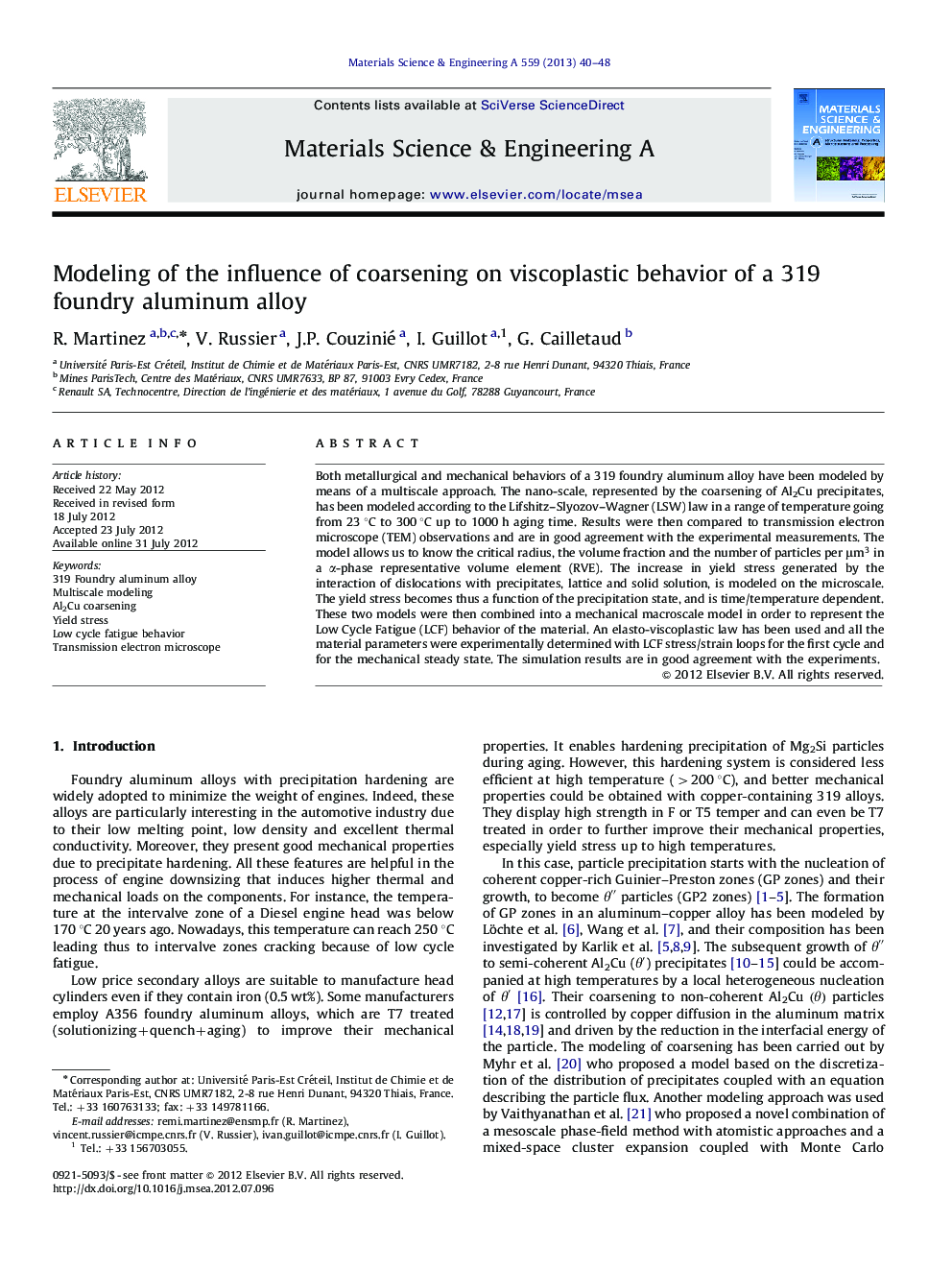| Article ID | Journal | Published Year | Pages | File Type |
|---|---|---|---|---|
| 1576631 | Materials Science and Engineering: A | 2013 | 9 Pages |
Abstract
Both metallurgical and mechanical behaviors of a 319 foundry aluminum alloy have been modeled by means of a multiscale approach. The nano-scale, represented by the coarsening of Al2Cu precipitates, has been modeled according to the Lifshitz-Slyozov-Wagner (LSW) law in a range of temperature going from 23 °C to 300 °C up to 1000 h aging time. Results were then compared to transmission electron microscope (TEM) observations and are in good agreement with the experimental measurements. The model allows us to know the critical radius, the volume fraction and the number of particles per μm3 in a α-phase representative volume element (RVE). The increase in yield stress generated by the interaction of dislocations with precipitates, lattice and solid solution, is modeled on the microscale. The yield stress becomes thus a function of the precipitation state, and is time/temperature dependent. These two models were then combined into a mechanical macroscale model in order to represent the Low Cycle Fatigue (LCF) behavior of the material. An elasto-viscoplastic law has been used and all the material parameters were experimentally determined with LCF stress/strain loops for the first cycle and for the mechanical steady state. The simulation results are in good agreement with the experiments.
Related Topics
Physical Sciences and Engineering
Materials Science
Materials Science (General)
Authors
R. Martinez, V. Russier, J.P. Couzinié, I. Guillot, G. Cailletaud,
